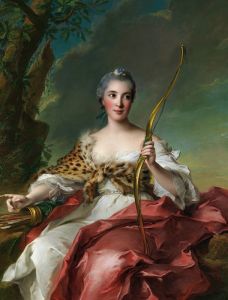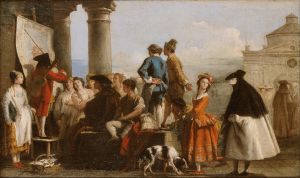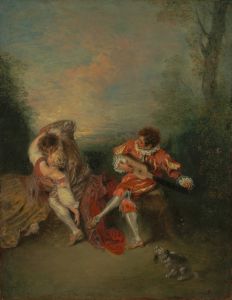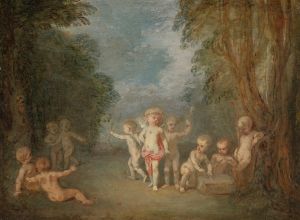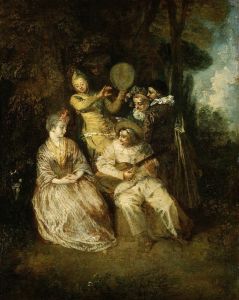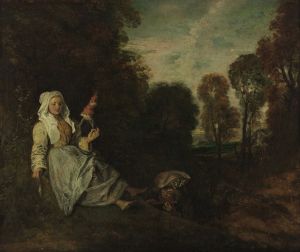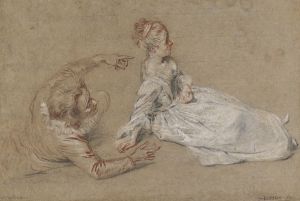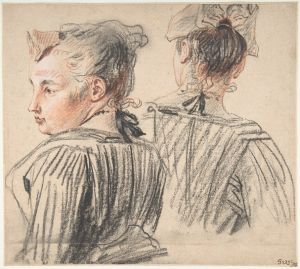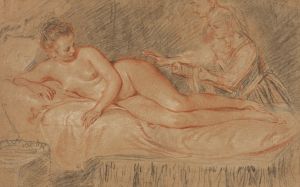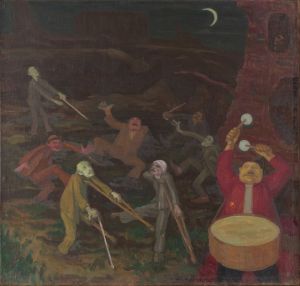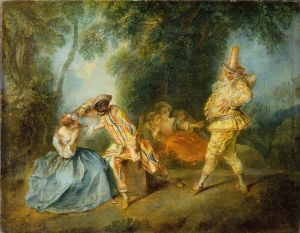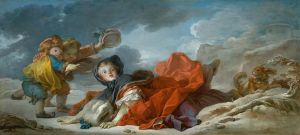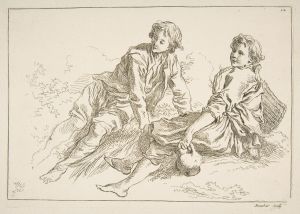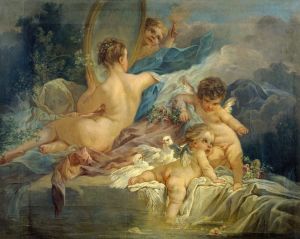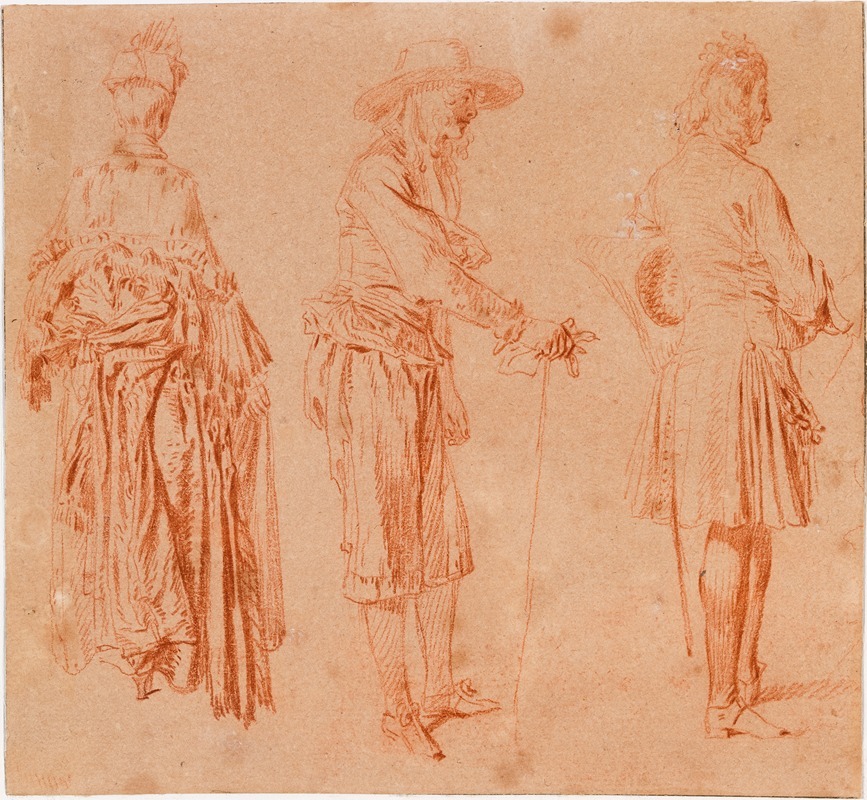
A Lady and Two Gentlemen
A hand-painted replica of Jean-Antoine Watteau’s masterpiece A Lady and Two Gentlemen, meticulously crafted by professional artists to capture the true essence of the original. Each piece is created with museum-quality canvas and rare mineral pigments, carefully painted by experienced artists with delicate brushstrokes and rich, layered colors to perfectly recreate the texture of the original artwork. Unlike machine-printed reproductions, this hand-painted version brings the painting to life, infused with the artist’s emotions and skill in every stroke. Whether for personal collection or home decoration, it instantly elevates the artistic atmosphere of any space.
"A Lady and Two Gentlemen" is a painting by the French Rococo artist Jean-Antoine Watteau. Created around 1717-1718, this work is a quintessential example of Watteau's mastery in capturing the elegance and subtlety of social interactions among the French aristocracy of the early 18th century. The painting is currently housed in the collection of the National Gallery of Art in Washington, D.C.
Jean-Antoine Watteau (1684-1721) was a pivotal figure in the development of the Rococo style, which is characterized by its lightness, grace, and playful use of color. Watteau's works often depict scenes of aristocratic leisure, known as fêtes galantes, which blend elements of reality and fantasy in idyllic settings.
"A Lady and Two Gentlemen" portrays a serene outdoor scene featuring three figures: a lady and two gentlemen. The lady, dressed in an elegant gown, is seated on a bench, while the two gentlemen stand nearby, engaged in conversation. The composition is balanced and harmonious, with the figures arranged in a triangular formation that draws the viewer's eye around the scene. The background features lush greenery and a distant landscape, adding to the idyllic and tranquil atmosphere of the painting.
Watteau's technique in this painting exemplifies his skillful use of color and light. The delicate brushstrokes and soft palette create a sense of intimacy and immediacy, capturing the fleeting nature of the moment. The artist's attention to detail in the rendering of fabrics and textures further enhances the realism and elegance of the scene.
The painting reflects the social customs and fashions of the time, with the figures' attire and demeanor indicative of their aristocratic status. The lady's gown, with its intricate lace and flowing fabric, and the gentlemen's stylish coats and breeches, are typical of early 18th-century French fashion. The interaction between the figures suggests a moment of polite conversation or flirtation, a common theme in Watteau's work.
"A Lady and Two Gentlemen" is significant not only for its artistic qualities but also for its contribution to the genre of fêtes galantes. Watteau's ability to capture the subtleties of human interaction and the beauty of the natural world has made him one of the most celebrated artists of the Rococo period. His influence can be seen in the works of later artists who sought to emulate his style and themes.
The painting's provenance includes its acquisition by the National Gallery of Art, where it remains an important part of the museum's collection. It continues to be admired by art historians and enthusiasts for its exquisite depiction of a moment in time and its reflection of the cultural and social milieu of early 18th-century France.
In summary, "A Lady and Two Gentlemen" by Jean-Antoine Watteau is a masterful representation of Rococo art, capturing the elegance and charm of aristocratic life with its delicate composition, refined use of color, and attention to detail. The painting remains a testament to Watteau's enduring legacy as a leading figure in the history of art.





